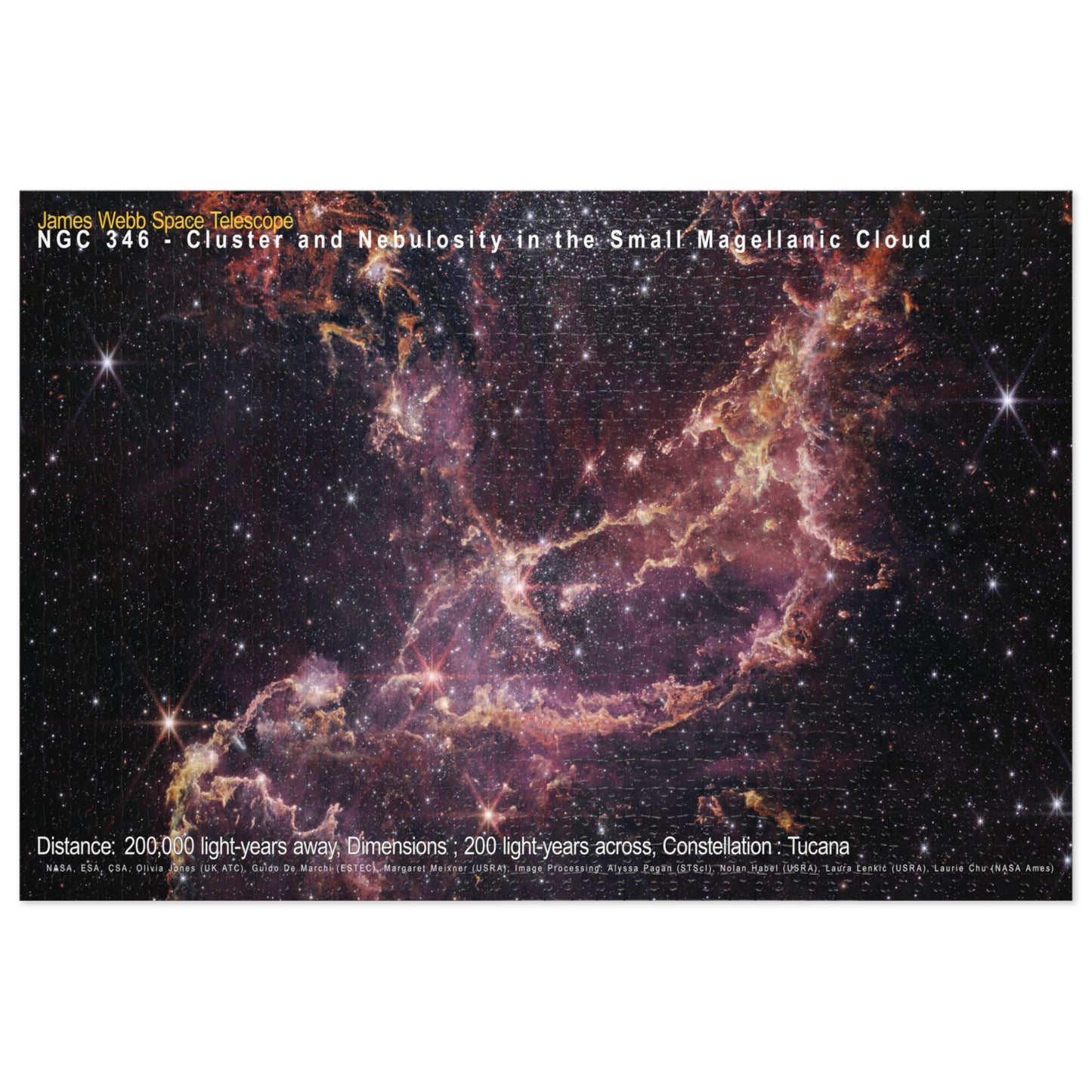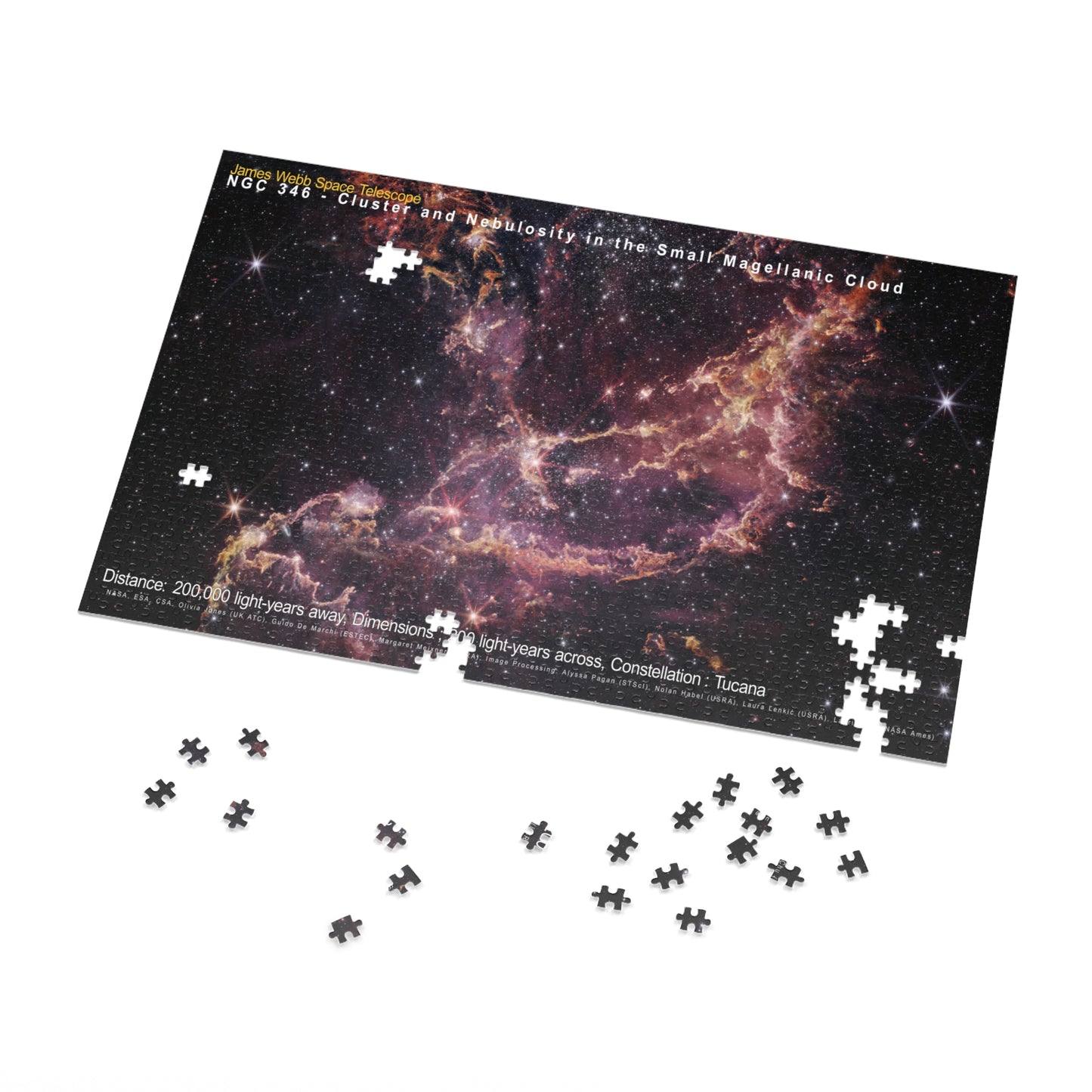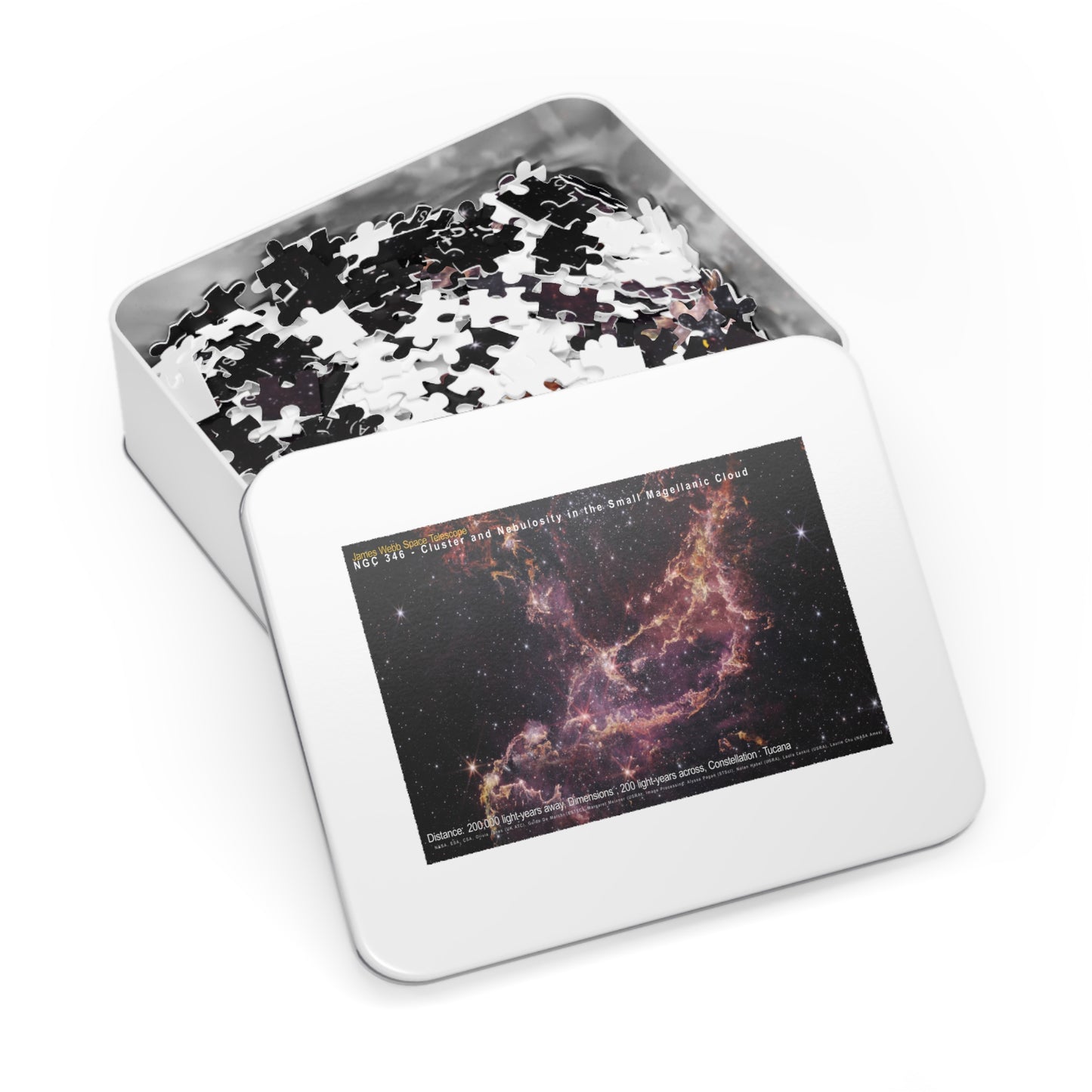NGC 346, Jigsaw Puzzle
NGC 346, Jigsaw Puzzle
Couldn't load pickup availability
Unveiling the Mysteries of the Cosmos: Dive Deep with Our Galaxy Puzzles!
Embark on a challenging and rewarding journey with stunning images.
A Universe of Wonder: Lose yourself in breathtaking views of distant galaxies, nebulae, and star clusters captured by the most powerful telescope ever built.
A Challenge Worthy of Any Stargazer: Choose from various puzzles to test your skills.
Sharpen Your Mind: As you piece together the cosmos, you'll develop problem-solving abilities, logical reasoning, and concentration.
Become an astronaut of the mind and explore the universe from the comfort of your home!
NGC 346:
NGC 346, shown here in this image from NASA's James Webb Space Telescope Near-Infrared Camera (NIRCam), is a dynamic star cluster that lies within a nebula 200,000 light-years away. Webb reveals the presence of many more building blocks than previously expected, not only for stars, but also for planets, in the form of clouds packed with dust and hydrogen.
The plumes and arcs of gas in this image contain two types of hydrogen. The pink gas represents energized hydrogen, which is typically as hot as around 10,000 °C (approximately 18,000 °F) or more. In contrast, the more orange gas represents dense, molecular hydrogen, which is much colder at around -200 °C (approximately -300 °F) or less, and associated dust.
The colder gas provides an excellent environment for stars to form. As they do, they change the environment around them. The effect of this is evident in the various ridges throughout, which are formed as the light from these young stars breaks down the dense clouds. The many pillars of glowing gas show the effects of this stellar erosion throughout the region.
Constellation Tucana
Distance 200,000 light-years away (61,300 parsecs)
Dimensions This image is about 3.9 arcminutes across (240 light-years).
Exposure Dates: 16 June 2022, 26 June 2022, 10 Oct 2022
Image Credit: NASA, ESA, CSA, Olivia Jones (UK ATC), Guido De Marchi (ESTEC), Margaret Meixner (USRA); Image Processing: Alyssa Pagan (STScI), Nolan Habel (USRA), Laura Lenkić (USRA), Laurie Chu (NASA Ames)
Share






